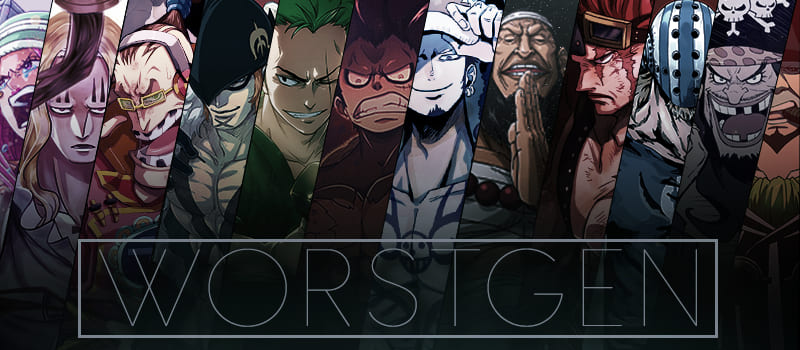Break Week Would you rather be a Martial Artist, Samurai or a Ninja
- Thread starter Chrono
- Start date
More options
Who Replied?I choose samurai.
I have read that swordsmanship is the most difficult martial art to master, not in modern times ofc and i believe that oda has gone by this belief to his manga as well.
I mean, i can't imagine the balls that the samurai had. A sword attack is the fastest attack compared to other weapons or hands/legs and even with the slightest mistake you could lose your life.
Manga/anime definitely samurai, real life something like Jon Jones but shorter
While i have some martial arts background i always admired swordsmanship even though i only played with fake swords lol.
I have read that swordsmanship is the most difficult martial art to master, not in modern times ofc and i believe that oda has gone by this belief to his manga as well.
I mean, i can't imagine the balls that the samurai had. A sword attack is the fastest attack compared to other weapons or hands/legs and even with the slightest mistake you could lose your life.
Manga/anime definitely samurai, real life something like Jon Jones but shorter

While i have some martial arts background i always admired swordsmanship even though i only played with fake swords lol.
Ninja has both swordsmanship and martial art.

Each child who grew up in a samurai family was expected to be a warrior when he grew up, so much of his childhood was spent practicing different martial arts. A complete samurai should be skilled at least in the use of the sword (kenjutsu), the bow and arrow (kyujutsu), the spear (sojutsu, yarijutsu), the halberd (naginatajutsu) and subsequently the use of firearms (houjutsu). Similarly, they were instructed in the use of these weapons while riding a horse. They were also expected to know how to swim and dive.[97]
Nihon Eiho (日本泳法, Japanese swimming style) originates from the Sengoku period in the 15th century.[98] The samurai developed Suijutsu (水術, (combat) water skills) which was useful in case they were thrown overboard during naval conflicts.[98] The samurai practiced Katchu gozen oyogi (甲冑御前游, full armor swimming), Tachi-oyogi (立ち泳ぎ, standing swimming) and Ina-tobi (鯔飛, flying mullet) to board enemy vessels.[98] Activities included strokes with swords, bows and firearms.[98] Hands were kept dry above the water to write messages with an ink brush on a paper scroll.[98] This skill was useful for muskets which require dry gunpowder.[98] Nihon Eiho is practiced by 28 schools and recognized by the Japan Swimming Federation.[98]
During the feudal era of Japan, various types of martial arts flourished, known in Japanese under the name of bujutsu (武術).[99] The term jutsu can be translated as "method", "art" or "technique"[100] and the name that each one has is indicative of the mode or weapon with which they are executed. The combat methods that were developed and perfected are very diverse, among which are:
Nihon Eiho (日本泳法, Japanese swimming style) originates from the Sengoku period in the 15th century.[98] The samurai developed Suijutsu (水術, (combat) water skills) which was useful in case they were thrown overboard during naval conflicts.[98] The samurai practiced Katchu gozen oyogi (甲冑御前游, full armor swimming), Tachi-oyogi (立ち泳ぎ, standing swimming) and Ina-tobi (鯔飛, flying mullet) to board enemy vessels.[98] Activities included strokes with swords, bows and firearms.[98] Hands were kept dry above the water to write messages with an ink brush on a paper scroll.[98] This skill was useful for muskets which require dry gunpowder.[98] Nihon Eiho is practiced by 28 schools and recognized by the Japan Swimming Federation.[98]
During the feudal era of Japan, various types of martial arts flourished, known in Japanese under the name of bujutsu (武術).[99] The term jutsu can be translated as "method", "art" or "technique"[100] and the name that each one has is indicative of the mode or weapon with which they are executed. The combat methods that were developed and perfected are very diverse, among which are:
People really sleep on the fact that the Strawhats have a master martial artist on the crew.

Samurai!Swords have better AP.
Ninja Dexterity intelligence with Arcane...
And let's say just for difference sake, Martial Arts requires Strength and some Dexterity.
Sorry just rambling.
Hmm.. you gave me the idea of a MMO/BloodSouls type of game for OP. Swordsman/Samurai would need Dexterity and Some Strength with Arcane.
Ninja Dexterity intelligence with Arcane...
And let's say just for difference sake, Martial Arts requires Strength and some Dexterity.
Sorry just rambling.
Ninja Dexterity intelligence with Arcane...
And let's say just for difference sake, Martial Arts requires Strength and some Dexterity.
Sorry just rambling.
